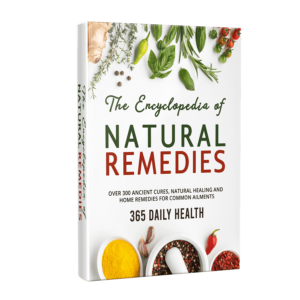Introduction to Oregano
Oregano health benefits are many. Oregano is rich in antioxidants, providing protection against oxidative stress. It also boasts antimicrobial properties, which may be beneficial in fighting certain bacterial infections.
Historical Uses
Oregano, known scientifically as Origanum vulgare, has a rich history of use in traditional medicine across various cultures. In ancient Greece, it was highly regarded for its healing properties and was commonly used to treat respiratory and digestive ailments. Moreover, the Greeks often used it as an antidote for poison. In Roman times, oregano was used in food preservation due to its antimicrobial properties. Meanwhile, in traditional Chinese medicine, oregano was valued for its ability to treat fever, vomiting, and diarrhea. From these historical uses, it’s clear that oregano’s potent therapeutic properties were recognized long before modern medicine.
Modern Uses of Oregano
Today, oregano is still recognized for its medicinal properties. The herb is rich in antioxidants and possesses anti-inflammatory qualities. One of the primary active compounds in oregano, carvacrol, is believed to contribute to its antimicrobial properties, making it effective against bacteria, fungi, and parasites. Moreover, oregano oil is commonly employed for the treatment of respiratory tract disorders, gastrointestinal (GI) disorders, menstrual cramps, and urinary tract disorders. Additionally, research indicates that oregano holds promise in terms of cancer prevention and treatment, although further studies are necessary to validate this assertion. As always, it’s recommended to consult with a healthcare professional before using oregano for medicinal purposes.
Oregano’s Key Compounds
Oregano’s powerful therapeutic attributes can be primarily attributed to its key active compounds, carvacrol and thymol.
Carvacrol is a monoterpenoid phenol that is largely responsible for oregano’s antimicrobial characteristics. It has been demonstrated to exhibit potent antibacterial properties, effectively neutralizing pathogenic bacteria including E.coli and Salmonella. Moreover, carvacrol’s antifungal action makes it effective against a wide variety of fungi and yeasts, including Candida albicans, a common human pathogen.
Thymol, another phenol found in oregano, shares many of carvacrol’s beneficial properties. It is known for its antiseptic, antibacterial, and antifungal qualities, making it a valuable addition to various health products like mouthwash and hand sanitizers. Additionally, thymol also exhibits strong antioxidant activity, protecting the body from the harmful effects of free radicals.
Together, these compounds give oregano its unique profile as a potent medicinal herb, demonstrating the profound value of naturally occurring compounds in health and wellness.
The compounds carvacrol and thymol, present in oregano, contribute to health benefits through several mechanisms. Carvacrol demonstrates strong antibacterial and antifungal properties, making it effective against various pathogens. This can bolster the immune system, aiding in the prevention of infections. Additionally, its ability to neutralize fungi and yeasts can offer relief to those suffering from fungal infections. Thymol, on the other hand, exhibits antiseptic, antibacterial, and antifungal qualities. These qualities can be especially beneficial in oral hygiene products, preventing the growth of harmful bacteria and maintaining oral health. Moreover, thymol’s antioxidant activity provides an additional layer of protection against free radicals, potentially reducing the risk of chronic illnesses such as heart disease and cancer. Together, these compounds underline oregano’s reputation as a potent medicinal herb, further emphasizing the importance of natural compounds in health and wellness.
Antibacterial Properties of Oregano
Oregano’s efficacy against a spectrum of bacteria is noteworthy. Many research studies have validated oregano as an effective antibacterial agent, particularly due to its substantial carvacrol and thymol content. These compounds exhibit an ability to disrupt the bacterial cell membrane and inhibit their growth. Some specific bacteria against which oregano has shown efficacy include E. coli, Salmonella, and Staphylococcus aureus, commonly associated with foodborne illnesses and skin infections respectively. Furthermore, even antibiotic-resistant strains of bacteria, a growing concern in modern healthcare, have shown susceptibility to oregano, indicating its potential as an alternative or adjunct treatment option. This substantiates oregano’s historical usage in traditional medicine for treating infections and underlines its significance in contemporary health practices.
A number of scientific studies have corroborated the antibacterial properties of oregano. For instance, a study conducted by Karpouhtsis et al., published in the Journal of Agricultural and Food Chemistry in 1998, found that oregano oil exhibited strong antibacterial properties against both gram-positive and gram-negative bacteria. Another study by Preuss et al., published in Molecular and Cellular Biochemistry in 2005, demonstrated that oregano oil was able to inhibit the growth of Staphylococcus aureus, a bacterium responsible for a multitude of infections. Furthermore, a 2013 study by Sienkiewicz et al., published in Phytomedicine, showed that oregano oil was effective against both antibiotic-sensitive and antibiotic-resistant strains of E.coli. These research findings underscore oregano’s noteworthy antibacterial potential, reinforcing its value in both traditional and modern medicinal practices.
Antioxidant Properties of Oregano
Oregano also boasts remarkable antioxidant properties, which play a crucial role in neutralizing harmful free radicals in the body. Free radicals, unstable molecules produced in our bodies due to factors such as environmental toxins and metabolic processes, can cause damage to our cells in a process known as oxidative stress. Oxidative stress is linked to various chronic illnesses like heart disease and cancer. Oregano, rich in phenolic compounds and flavonoids, functions as an antioxidant, readily donating electrons to these unstable free radical molecules, thus stabilizing them and preventing them from causing harm. Furthermore, studies indicate that carvacrol and thymol, two of oregano’s main components, have particularly potent antioxidant effects. Therefore, oregano’s antioxidant capabilities are not only essential for maintaining optimal health but may also offer protection against certain diseases related to oxidative stress.
A study conducted by Teixeira et al., published in the Journal of Agricultural and Food Chemistry in 2003, reveals the antioxidant potential of oregano. The researchers found that the herb exhibits higher antioxidant activity compared to other herbs such as thyme, sage, and rosemary, largely due to its rich phenolic compound and flavonoid content. Furthermore, a study by Zheng and Wang in 2001 demonstrated the antioxidant effects of the two main components of oregano, carvacrol and thymol. The study, published in the Journal of Biochemistry and Molecular Biology, used a range of assays to demonstrate the potent antioxidant activity of these compounds, indicating their potential in neutralizing the harmful effects of free radicals in the body. These findings affirm the antioxidant effectiveness of oregano and its potential contributions to health and disease prevention.
Oregano’s Anti-inflammatory and Pain Relief Properties
Oregano also boasts significant anti-inflammatory and pain-relieving properties, making it a natural remedy for a variety of ailments. The plant’s compounds, notably carvacrol and thymol, are believed to inhibit the synthesis of prostaglandins, lipid compounds that can cause inflammation and pain in the body. Additionally, oregano oil has been used in traditional medicine for its analgesic effects, providing relief from discomfort associated with conditions such as arthritis, muscle pain, and toothaches. Thus, the incorporation of oregano into one’s diet or health regimen could potentially aid in managing inflammation and alleviating pain, further attesting to the herb’s versatile health benefits.
In recent years, numerous clinical trials and studies have sought to explore the health benefits of oregano. For example, a study conducted by the Department of Physiology, School of Medicine at the University of Granada in Spain, revealed that oregano essential oil had a significant anti-inflammatory effect in a rat model of acute inflammation. The researchers concluded that this effect was primarily attributable to the potent anti-inflammatory properties of carvacrol. Additionally, a 2017 study published in the Journal of Medicinal Food reported that oregano essential oil could alleviate pain in a mouse model of chronic neuropathic pain, suggesting potential applications in pain management. These studies underscore the therapeutic potential of oregano, although further research and human trials are needed to confirm these findings and fully understand the mechanisms of action.
Digestive Health Benefits of Oregano
Despite its known benefits in managing inflammation and pain, oregano also contributes to a healthy digestive system. It has been traditionally used as a digestive aid due to its carminative properties – the ability to prevent gas formation in the gastrointestinal tract – thereby reducing bloating, indigestion, and potential discomfort. Moreover, oregano is rich in dietary fiber which aids in the smooth function of the digestive system by promoting regular bowel movements and reducing the risk of constipation. Furthermore, the thymol and carvacrol in oregano are known to stimulate bile production, which can improve the digestion of fats. Additionally, in vitro studies have suggested the potential of oregano oil to combat certain bacteria, including those that can cause digestive issues. Nevertheless, more research is needed to fully substantiate these potential benefits of oregano for digestive health.
Oregano’s Use as a Bug Repellent Alternative
Apart from its numerous health benefits, oregano also serves as a natural and safe alternative to chemical-based insect repellents. The oil derived from oregano has been found to repel various types of insects effectively. The potent compounds in oregano, namely carvacrol and thymol, have insecticidal properties that make it an effective natural deterrent against mosquitoes, flies, and other unwanted pests. Anecdotal evidence suggests that oregano oil properly diluted, could be used topically on the skin or sprayed in outdoor areas to ward off bugs. Nevertheless, it is always advisable to perform a patch test before applying oregano oil directly to the skin due to its potency. Further research and field studies would help solidify the application of oregano as a bug-repellent alternative.
Conclusion
In conclusion, oregano is more than just an aromatic herb used in culinary practices. It embodies a myriad of potential health benefits, from pain and inflammation management to promoting a healthy digestive system. The role of carvacrol and thymol, significant compounds present in oregano, is noteworthy in this context. Their potential therapeutic properties have sparked interest in the medicinal community, leading to a range of studies aimed at understanding their effects. This research has begun to shed light on the potential of oregano in modern medicine. However, more comprehensive studies, including human trials, are required to thoroughly understand the mechanisms underlying oregano’s health benefits and to confirm its therapeutic utility. Therefore, while initial findings are promising, the journey to fully integrate oregano into modern medicinal practices is still ongoing.
Always check with your medical provider before using any herbal supplement.
Reference:
https://pubmed.ncbi.nlm.nih.gov/28613267/
https://pubmed.ncbi.nlm.nih.gov/36615794/
https://pubmed.ncbi.nlm.nih.gov/29744941/
https://pubmed.ncbi.nlm.nih.gov/36903396/


